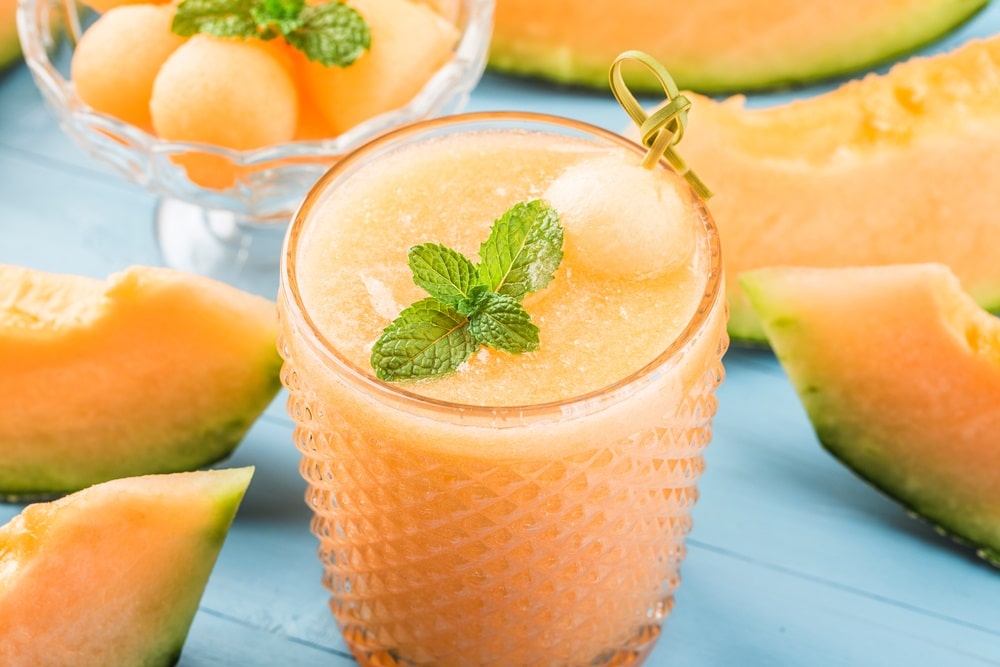
Hami melons have quite a few names – you may know them as the Chinese melon or snow melon. The name “Hami” comes from the melon’s place of origin which is Hami in Xinjiang, China.
You will probably be able to find these delicious melons in your local Asian supermarket. If you’re lucky enough to get your hands on one, keep the seeds and grow them in your kitchen garden!
What do Hami melons look like?
Hami melons aren’t much different from cantaloupes except that they’re oval instead of round. They both are part of the musk melon family.
Many are yellow-skinned and yellow on the inside but some are white – hence the name “snow melon.” Others are yellow with green stripes and corky textured “netting” over the skin.
How Do You Tell If Your Hami Melon Is Ripe?
Today’s question is important because an unripe melon is hard, tasteless, and basically unusable once it has been opened. We find that the best way to tell if a melon is ripe is to smell it.
If it has very little smell, it is underripe. If it has a sweet, musky, fruity, floral smell, you’re good to go. The best place to sniff is on the stem end.
You can also judge your melon’s ripeness by its skin color. If it is a yellow one, the skin should be rich yellow with a netted covering.
It is difficult to judge ripeness by the color though as some varieties have green streaks even when ripe.
Press gently on the skin. While the texture should be firm, a ripe melon will yield slightly under pressure. The melon should feel heavy for its size.
While you definitely want your melon to be properly ripe, you don’t want it to be overripe. This would give it a fermented taste and a mushy texture.
Look out for dark marks or brown patches as these signal an old melon. Also, check for signs of mold on the stem end. Overripe melons will often have a strong, musky and sometimes fermented smell.
If you have bought one and you don’t think it is ripe enough, keep it at room temperature as they do sometimes ripen up further.
How to prepare your ripe Hami melon
Now that you’ve purchased a perfectly ripe Hami melon and got it safely home, you’ll want to know how to prepare it. Melons are eaten raw and rarely cooked.
Most people prefer their melon chilled, so do give yours a little time in the refrigerator before cutting into it. When you’re ready, cut it in half lengthwise with a sharp knife.
Remove the seeds – we find that a spoon works best for this. (Remember to save the seeds if you want to try growing them.) The skin is inedible.
Now, you can either scoop out balls of ripe flesh with a melon baller, cut the flesh into cubes, or simply slice the melon into wedges and serve it like that.
What to serve ripe Hami melon with Hami melons are delicious in a fruit salad with other melon varieties or fruit such as:
- Strawberries
- Apples
- Oranges
- Pineapples
- Mango
- Kiwi fruit
Hami melons also pair well with something salty like ham or cheese. Use some on your next cheese platter! Serve them for breakfast or whirl them into a smoothie.
They make a wonderfully simple dessert at the end of a rich, heavy meal. Squeeze a little lime juice over them or try them with some finely grated ginger.
How to store the remainder
It’s not often that you will use a whole melon in one go. If you’re storing the second half, leave the seeds inside it and cover it tightly with cling wrap. Store it in the fridge. Note that it won’t keep for more than three days once cut.
To conclude
Now that you know how to tell when Hami melons are ripe, do give these luscious fruits a try. They may prove to be a little more difficult to find than the usual melon varieties but the search will be worth it!
They’re normally available in spring and summer. They’re refreshing, low in calories, and perfect for snacking on.

